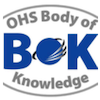Abstract
Rules and procedures to control work have long been central instruments of occupational health and safety (OHS) management. Applying rules and procedures is consistent with top- down organisational strategies for managing OHS such as OHS management systems, behavioural safety and safety culture. Recent safety, social and organisational theories support a more nuanced understanding of the role of people within organisations and the uses and limitations of rules and procedures for supporting work. This chapter elucidates challenges associated with the use of rules and procedures in managing OHS and is a resource for OHS professionals as they seek to influence the management of OHS in their organisations. OHS professionals and senior leadership of organisations and industries may need to critically review their beliefs about, and approaches to, rules and procedures to ensure that they are useful in supporting the performance of frontline work.
Keywords: safety, OHS, rule, procedure, compliance
First year of publication: 2019
Current Version: 2020
Table of contents
| 1 | Introduction |
| 2 | Historical perspective |
| 3 | Purpose of rules and procedures |
| 3.1 | Setting hard boundaries and safety margins |
| 3.2 | Guides to inform high-risk work |
| 3.3 | Resources for action |
| 3.4 | Repository of organisational learning |
| 3.5 | Coordination mechanisms |
| 3.6 | Institutionalising OHS practices |
| 4 | Rules and procedures within organisations |
| 4.1 | Rules and procedures within a safe system of work |
| 4.2 | Development of rules and procedures |
| 4.3 | Avoiding ‘safety clutter’ |
| 4.4 | Enforcement of rules and procedures |
| 5 | The object of management – the rule and procedure, or the work |
| 6 | Organisational approaches for rules and procedures in the management of OHS18 |
| 7 | The role of the OHS professional |
| Summary | |
| References |

David Provan BBehSci, MHlthSci, MBA, PhD, ChOHSP
Managing Director, Forge Works, Researcher, Griffith University
David is a safety professional with more than 20 years of experience as a director of health and safety
within high-hazard industries, including oil and gas, construction and rail. He is the founder and
managing director of Forge Works safety consultancy and a part-time research fellow at the Safety
Science Innovation Lab at Griffith University. David completed his doctorate on the identity, practice
and future of the OHS profession.

Andrew Rae BE(CompSys), PhD, PGCAP, FHEA
Senior Lecturer, Griffith University
Drew is a senior lecturer in the Safety Science Innovation Lab at Griffith University, where he teaches
courses on safety engineering and supervises early-career researchers. Drew’s own research brings
a critical cross-disciplinary approach to the examination of myths, rituals and bad habits that surround
safety practice. His recent publications challenge the common assumption that risk assessments and
incident investigations lead to safer work. He suggests alternatives based on a better understanding
of constraints that prevent safe innovation and resources that support successful work. Drew is cohost of the ‘Safety of Work’ podcast and associate editor of the journal Safety Science.
The OHS Body of Knowledge takes a conceptual approach which enables it to be applied in different contexts and frameworks.
To optimise its value for education and professional development learning outcomes have been developed for each technical chapter in the Body of Knowledge.
The learning outcomes as described give an indication of what should be the capabilities of an OHS professional; it is up to those developing OHS education programs, OHS professionals planning their CPD or recruiters or employers selecting or developing people for the OHS function to consider the required breadth vs. depth .
Please read the section on using the learning outcomes before delving into the leaning outcomes of the individual chapters.
The numbers against each learning outcome refer to the chapter number of the BOK download page. No learning outcomes have been developed for the chapters considered introductory or underpinning knowledge (that is chapters 1, 2, 3, 4, 5, 6, 7, 1, .13, 14, 15.)
Podcast
3M Science of Safety Podcast: Ep 56: Rules and Procedures
Rules and procedures play a pivotal role in health and safety, particularly in high-risk environments. However, excessive documentation and governance can create an illusion of safety while possibly causing confusion and increasing risks. These concerns raise some critical questions, such as: what is, and what should be, the role of rules and procedures in regulatory compliance and hazard control.
Date: 2019
Presenter: David Provan
Source: https://3mscienceofsafety.libsyn.com/episode-56-rules-procedures

